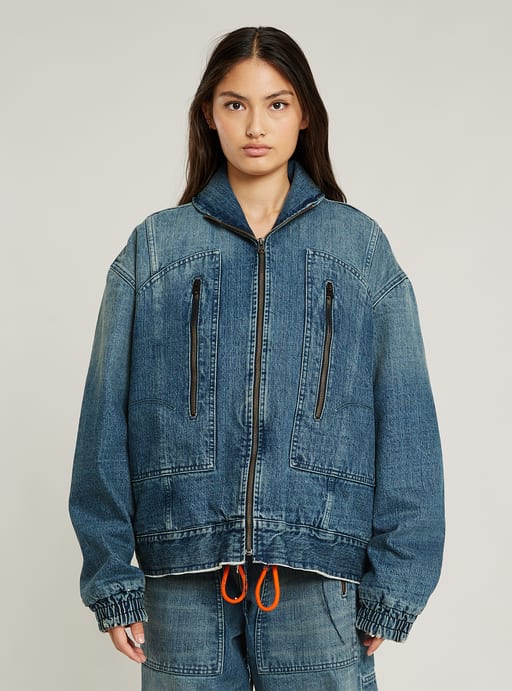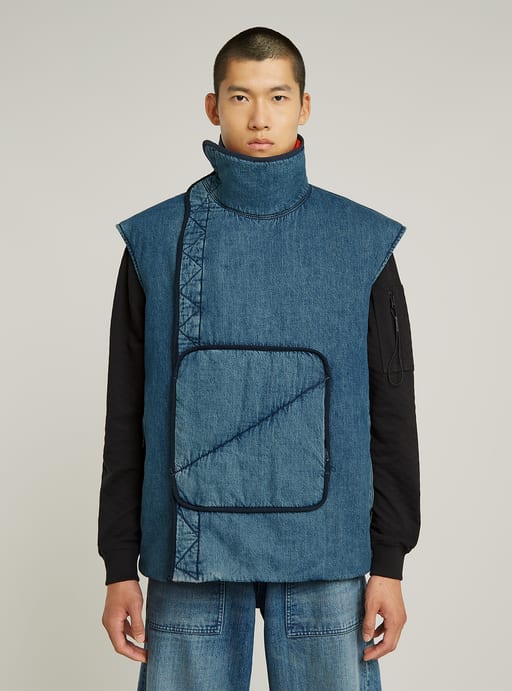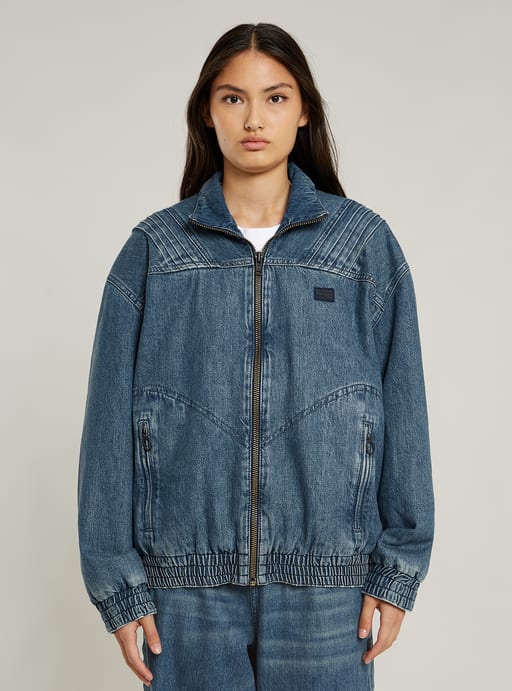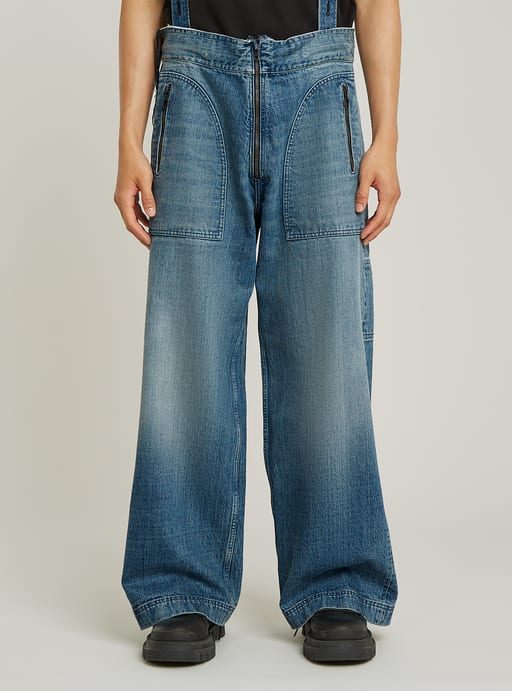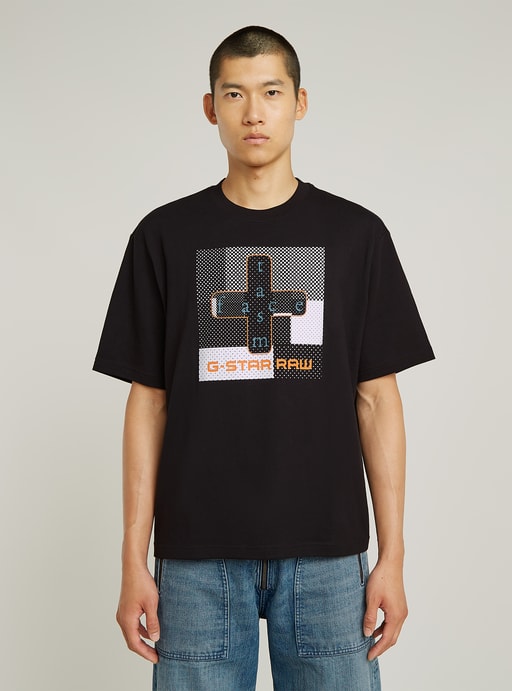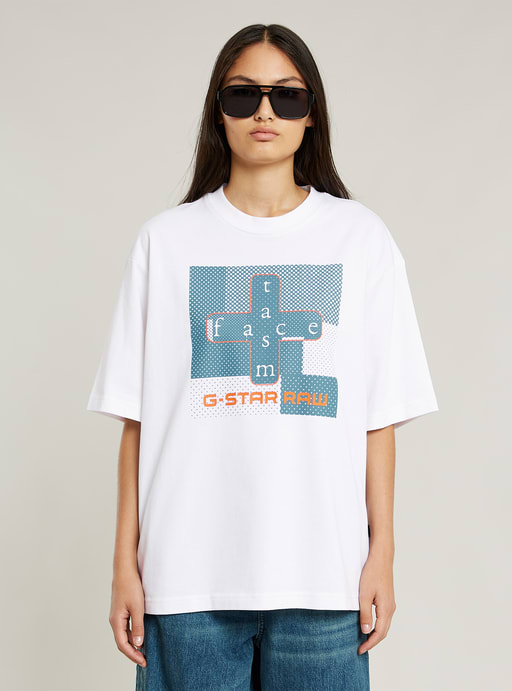Denim has been an integral part of Japanese fashion. It first made its way into Japan from the US in the ‘60s, and has since penetrated the youth culture, leading local craftsmen to take ownership over the fabric. Produced on vintage looms, Japanese denim is now a prized possession among denim aficionados across the world. Alongside the subcultures that embraced its appeal, such as Gyaru and Amekaji, the fabric has become a symbol of rebellion and deviation from traditional norms. Something that resonates with FACETASM’s unorthodox approach to contemporary streetwear.
Founded in 2007 by Hiromichi Ochiai, FACETASM has gained both domestic and international attention, becoming the first Japanese label to be a finalist in the LVMH prize competition. Renowned for its seamless blend of traditional Japanese tailoring and deconstructed silhouettes, the brand’s innovative vision continues to challenge the industry. With Ochiai’s textile background, FACETASM skillfully plays with textures, demonstrating fluency in our signature fabric: Denim. Together, we undertook an expedition to our archive and, inspired by unique pieces like NASA uniforms, created an eight-piece capsule collection titled “Denim Depot Universe.”
We recently sat down with the mastermind behind FACETASM to learn more about how this alliance came to life.
04 October 2024
Collaborations
United in Denim Universe
Intertwined in indigo threads. United by a yearning for craftsmanship. Tokyo and Amsterdam pioneered denim construction. As a testament to this unwavering bond, we join forces with Japanese brand FACETASM to reinterpret our signature aesthetics with a unisex capsule collection. Known for his experimental and eclectic approach, founder Hiromichi Ochiai connects with us on a deeper level by diving into our archive and blending our seemingly distinct identities into a unified vision.
Cut From the Same Cloth
You were born in Tokyo. How did growing up there, and the city itself, inspire your creative process?
I’ve been into fashion since middle school. And I loved American culture, particularly brands like Ralph Lauren. In Tokyo, second-hand clothes of such brands were extremely popular. The Harajuku girls and Japanese labels like Undercover were also significant influences during that time. Those were the moments I truly lived through and that inspired me. Other than that, I was influenced by European fashion culture, such as the Antwerp Six from Belgium. All of that really fueled my aspiration to become a fashion designer.
FACETASM is renowned for its fusion of streetwear, traditional Japanese tailoring and avant-garde design. How do you merge all these elements together? Do you do that on purpose, or does it happen naturally?
I’ve seen a variety of styles and expressions, and I enjoy exploring all of them. I think that this exposure has definitely influenced my design approach. I’m open to mixing things up, and I think that fusing everything comes naturally to me. I realize that we as a brand are a mixture of all those things only when you mention it. But when I’m designing, I enjoy the process without any limitations, and the fusion is a natural result of how I work.
How did you dive into the world of G-STAR, and how were you able to fuse your identity with ours?
When the project started, I visited the headquarters, talked to the people there, witnessed the archive. I immersed myself in the G-STAR culture. I was impressed by how much you care and research different areas and eras of fashion. I wanted to collaborate by mixing these two worlds, and not just what we know G-STAR as, but what I saw behind the scenes. Going beyond what’s out there, and really connecting the concepts and thought processes.
“Stepping into the archive was impressive [...] For someone in the fashion industry, it felt like heaven.”
Entering the office helps you really understand the core identity of G-STAR. It’s nice that you could feel that too. Was there anything specific that stood out to you during your visit?
Stepping into the archive was impressive, with its massive collection of clothing from so many different genres and eras. I saw pieces like NASA uniforms, workwear, and mod-style clothing. For someone in the fashion industry, it felt like heaven. I was deeply moved and spent a very fulfilling time there. The techniques and pieces I saw proved how serious G-STAR is about fashion.
In the capsule collection you’ve designed, the vest is definitely a statement piece. Was there a specific inspiration for that?
Originally, it wasn’t a vest. It was inspired by a piece of clothing that divers would wear right after they come out of the sea — something they could easily put on. We also played around with elements of space wear. For this collection, there’s definitely various cultures and inspirations mixed together. The vest is quite symbolic of the entire collection. For example, the orange color of the inner lining is an homage to flight jackets.
How do you approach design from a sustainability point of view?
When I design, it’s a given that the pieces I create must be kind to the environment and people. Minimizing environmental impact isn’t something special; it’s a fundamental premise I start with. I think this approach will only become more important in the future.
“As you live your life, you might get used to what you have and forget that initial spark.”
You mentioned that you wanted to be a fashion designer since middle school. What exactly made you want to design clothes?
It’s hard to explain because it was such a natural desire. It was the first dream I ever had in my life, and I stuck to it. There was nothing else that I felt so strongly about. Creating fashion pieces and seeing people wear them is incredibly rewarding.
What advice would you give to emerging fashion designers who look up to you and want to dedicate their lives to fashion?
The impulse you get when you realize that you want to become a fashion designer or create your own brand doesn’t always stay consistent. As you live your life, you might get used to what you have and forget that initial spark. That first thought, the dream of wanting to be a designer, is precious. It’s important to stick to it and not let it be forgotten as time passes. I’ve come to realize that more and more these days.
